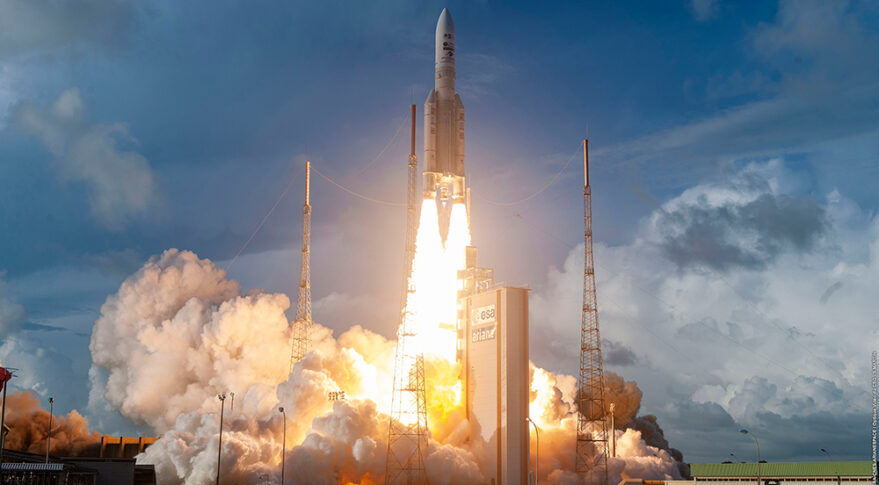The European Space Agency is faced with the problem of launch vehicles. Vega C recently exploded at launch. And the investigation on it continues. Ariane 6 is not ready yet, and the Russian Union should be abandoned because of aggression against Ukraine.

Europe’s problems with rockets
On January 23, the head of the European Space Agency (ESA), Josef Eschbacher, said that his organization was facing a certain crisis due to the shortage of launch vehicles. It was caused by a combination of circumstances when the Vega C rocket exploded at launch, and the development of the Ariane 6 was delayed. Therefore, in the middle of this year, a situation may arise when Europe will not be able to launch spacecraft at all.
Vega C is a new improved version of the Vega light carrier. ESA had high hopes for it. However, on December 20, its unsuccessful launch took place. The investigation into the causes of the accident is ongoing, and it is expected that it will be completed in the second half of February.
However, it is already clear that the problem is in the second stage of the rocket. And this opens up to the ESA. Since Vega and Vega C differ in this way, it is quite possible that the launches of the old version will be able to resume earlier than the new one. However, there are only two carriers left in this version, and the new version should make 10 launches.
Ariane 6
In any case, Vega and Vega C launches are a priority for ESA. The start of operation of the Ariane 6 is not so urgent. This new carrier is just entering the final testing stage.
It is expected that its first launch will take place in the fourth quarter of 2023. At the briefing, Aschbacher said that he would adhere to such a schedule, but refused to specify the exact date of the first launch.
The agency also has high hopes for developers of commercial rockets. Aschbacher said that he was considering the possibility of financing additional competitions that could speed up their development. ESA is not prepared to sign contracts before the carriers make their first successful flight, but it can do so if it is possible to speed up their creation in this way.
ESA’s problem with Soyuz spacecraft
Separately, the situation with carriers was aggravated by the fact that problems with Vega C and Ariane 6 arose when Europe refused to use Russian Soyuz. It was necessary to do this after the beginning of a large-scale invasion of Ukraine.
In this regard, new carriers had to be found for some important missions for Europe. For example, the Euclid space telescope will have to be launched using SpaceX rockets. This will most likely happen in July of this year.
At the same time, there are reports that France and Russia are negotiating the resumption of Soyuz launches at the cosmodrome in French Guiana. Allegedly, the aggressor country is trying to exchange updates of this program for the remaining 36 OneWeb satellites at the Baikonur cosmodrome.
Aschbacher refused to comment on these reports, referring to the fact that such agreements were a matter for the governments of Russia and France and only them. However, he noted that something really needed to be solved with the launch complex for Russian rockets in French Guiana.
According to spacenews.com
Follow us on Twitter to get the most interesting space news in time
https://twitter.com/ust_magazine

